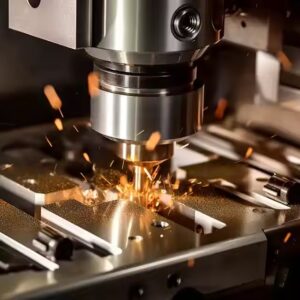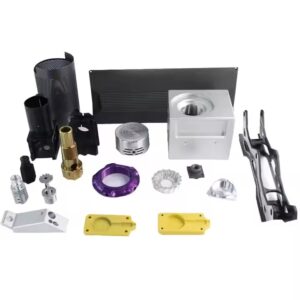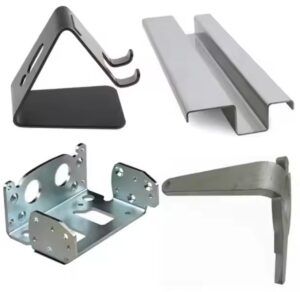As a manufacturer, ensuring the accuracy of your CNC machining processes is crucial for delivering high-quality products. Here are some practical tips and strategies to help you optimize your CNC processes and boost the accuracy of your machined parts.
Understanding Your Machine’s Capabilities and Limitations
Before you start tweaking your CNC machine, it’s essential to understand its capabilities and limitations. Every machine is part of a system, influenced by factors like temperature, spindle behavior, and the environment in which it operates.
Tool Offsets and Spindle Behavior
One common mistake is treating the tool tip position as static. However, different speeds generate different temperatures and centrifugal forces within the spindle, affecting its behavior. To account for this, measure the tool tip position at various RPM values and adjust the tool offsets accordingly.
Measure the Process, Not Just the Part
Instead of focusing solely on the finished part, measure the machining process itself. This includes identifying harmonic spindle speeds that can cause chatter and vibrations, which negatively impact accuracy. Test cutting can help you find stable cutting speeds, leading to a quieter cut and higher metal removal rates.
Use Diagnostic Tools and Reference Objects
Diagnostic tools like laser tool probes can measure the true tool tip position while the spindle is running, providing real-time feedback. Additionally, using a known reference object within the machining zone can help capture any measurement errors. This object should be made of the same material as the machined part and have similar geometry. The difference between the known value and the measured value can be used to update and correct the machine’s own measurements.

Optimize Your Machining Process
Programming Skills
An experienced programmer can skillfully use an in-house program, reducing cumulative system errors while providing full flexibility within the main program and subprogram. For complex operations, use multi-part mold machining where the main program calls the subprogram repeatedly until processing is completed, ensuring consistency in processing volume and improving efficiency.
Reduce Cumulative Errors
Avoid incremental methods that accumulate errors over multiple sections. Instead, use absolute positioning based on the workpiece origin. This reduces the cumulative error of the CNC system and ensures more accurate results.
Adjust the Process System
Use trial cutting to adjust the blade extension to the material. This method involves measuring the size, adjusting the amount of cutting, and retrying until the required size is achieved. For mass production, adjust the relative positions of the machine tool, fixture, workpiece, and tool in advance to ensure high productivity.
Reduce Machine Error
Improve the rotation accuracy of bearings by selecting high-precision rolling bearings, multi-oil wedge dynamic pressure bearings, or hydrostatic bearings. Also, improve the machining accuracy of the box support hole and spindle journal, and adjust the radial runout range of related parts to compensate for errors.
Reduce Tool Wear
Ensure tools are re-sharpened before they reach the sharp wear stage. Use special cutting oil for sufficient lubrication, and select tool materials that meet process requirements.
Reduce Thermal Deformation
Reduce heat generation from the heat source and isolate it. Achieve an equilibrium temperature field and adopt a reasonable machine tool component structure and assembly benchmark. Accelerate heat transfer balance and control ambient temperature.
Reduce Residual Stress
Increase heat treatment processes to eliminate internal stress and reasonably arrange the technological process.
Improve Mechanical Design and Accessories
High-Precision Bearings and Guides
Using high-precision bearings such as precision cylindrical roller bearings, oil-rich wedge bearings, or hydrostatic bearings can significantly improve bearing rotation accuracy. Ensure the machining accuracy of the case support hole and spindle journal, and adjust the radial runout range of related parts to reduce errors.
Tool Quality and Setup
High-quality tools are crucial for maintaining accuracy. Use tool presetters to measure tool placement accuracy in under a minute, reducing the time spent on manual setting. This ensures precise positioning of tools, leading to more accurate cuts.
Automate Where Possible
Automating many aspects of machining, such as tool setup, can reduce the time required to complete each task. Updating software and hardware to accommodate higher levels of precision will also improve the process. For example, new software can enhance the machine’s ability to predict where the tool will need to be placed in the future, making it more efficient and accurate throughout the machining process.

Conclusion
Improving the accuracy of your CNC machining process is a multifaceted task that requires attention to detail and a systematic approach. By understanding your machine’s capabilities, optimizing your machining process, improving mechanical designs, and automating where possible, you can significantly boost the precision of your machined parts.
Remember, it’s all about finding that sweet spot between speed, accuracy, and efficiency. Don’t be afraid to experiment and adjust your settings. Invest in high-quality tools and components, and take the time to train your operators on new software and hardware.
In the end, it’s not just about producing parts; it’s about producing parts that meet or exceed your customers’ expectations. With these tips, you’ll be well on your way to achieving that goal. So, take a deep breath, get back to your workshop, and start optimizing those CNC processes. Your parts—and your customers—will thank you. Happy machining




